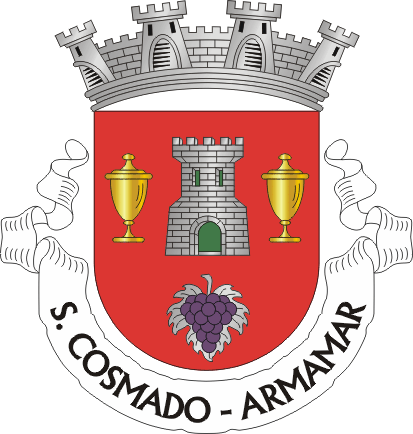
Vines
The Region
The Távora-Varosa region is located in a land that, in the past, was populated by Cistercian monks in large numbers, with historical records of wine production dating more than 500 years old, situated between two of the most historical Portuguese wine regions: Douro (North) and Dao on the South (for more information - https://www.cvrtavora-varosa.pt/regiao.asp).

São Cosmado, where the vineyards of Casa de Vinhago are located, is one of the largest territories of the Armamar Municipality. The historical records of this territory indicate that it was very populated from very remote times. In 1512, São Cosmado is granted Municipality status by King Manuel of Portugal and after several administrative reforms, in 1949, had a population of 3459 inhabitants. In 1955, the São Cosmado municipality was extinct and absorbed by the Armamar Municipality.

The agriculture
The historical records indicate that agriculture, forestry, and pastoralism (mostly goats), were always the main economic activities of the region.
Grapes and wine, fruits (apples, pears, cherries, figures), some cereals, olive oil, chestnuts, some rare berries, pine resin and even tabaco, are some examples of the variety of crops that shaped this territory in different moments of our history.
During the 20th century wine and grapes, olive oil and pine wood and pine resin were particularly important and the use of grapes in the São Cosmado coat of arms reinforces this evidence.
Today the Távora-Varosa region has stabilized in around 3000 hectares of planted vineyards and a significant agricultural area has been also occupied with expansion of the already famous mountain apple from Armamar
At Casa de Vinhago we witness, every day, the excellent geomorphological and climate conditions of this territory/terroir. Especially the three slopes where our main vineyards are located, benefit significantly from a shell format that protects them for the cold northern winds and allow excellent sun exposure, in fields that are well hydrated. This allows a very good development all through the plant’s cycle.
It is the combination of these characteristics that allow us to produce high quality grapes, which allow us to vinify unique wines, honouring the secular history of São Cosmado and the Távora-Varosa region.

The Vineyars
Next to family house and to the winery, the Vinhago was considered one of the best quality vineyards of Carlos Teixeira.
Today, this 6-hectare estate, mostly occupied with vineyards, is the result of the integration of several small plots of land (Vinhago, Feio and Moreiras). Located at 500 meters of altitude, in a platform more or less half way down to the river Tedo, granite soil, it has 1.5 hectares with red grapes (Touriga Francesa, Touriga Nacional e Tinta Barroca) and the remaining with white grapes (Malvasia Fina, Rabigato, Arinto, Fernão Pires, Cerceal, Gouveio e Chardonnay).


Sobreirinha or Vale de Marcos has a total 5 hectares, at 550m altitude, the majority of the soil is granite, but around 15% of the area is transition of granite and shale. It is organised in levels that were converted from a forest area. The grapes planted are white (Malvasia Fina, Fernão Pires e Rabigato) and red (Touriga Nacional e Pinot Noir).
Overseeing the property, a majestic penguin, symbol of tenacity, which was necessary to build a high potential vineyard in an area that farmed and populated many years ago.
Telheira (e Albugueiro) located in an area with several historical constructions that confirm the presence of inhabitants many years ago. A nearly perfect granite oven used to produce clay roofing is one of the most relevant historical records and a unique site.


The warmest of the vineyards, very well protected from winds and built in several small levels, at around 450 meters altitude. Mainly granite soil, but with areas of transition between shale and granite, with 3 red grapes planted: Tinta Roriz, Touriga Franca e Touriga Nacional. At the lowest level, a small stream of water shines and reinforce the romantic nature of this estate.

All the family vineyards are located in historical fields, they have unique and complementary characteristics and were carefully chosen for their potential to produce high quality grapes.
